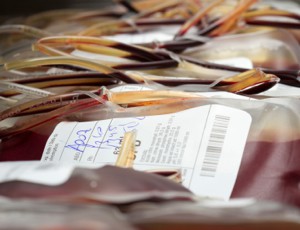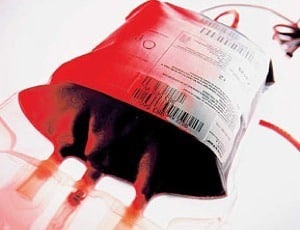Eye tracking system in simulation training of real-time ultrasound-guided venipuncture

“The eye gaze was associated with the success rate of RTUS-guided venipuncture” Tatsuru et al (2021).
Ultrasound-guided cannulation for medical students

“As ultrasound becomes a more readily available point-of-care technology, it should be considered for inclusion in the undergraduate medical curriculum” Armson et al (2021).
Dialysis cuffed catheter adhesion to the right atrium

“The adhesion of the catheter to the right atrium was observed, but no infection was detected in the bloodstream” Ogawa et al (2021).
Extending totally implantable port flushing interval during COVID-19

“The interval of Ports flushing procedures for patients without clinical symptoms can be appropriately extended during the COVID-19 epidemic” Yan et al (2021).
The IPS IV Forum announce the 3rd webinar in the IV forum series – Free Registration

“The IPS IV Forum are pleased to announce the 3rd Webinar in the IV Forum series on Tuesday 16th March from 4.30pm to 6pm” IPS IV Forum (2021).
Infrared vein visualization devices for ease of IV access in children

“Appropriate simulator mannequins should be utilised to train healthcare providers in using these vein finder devices” Vyas et al (2021).
Field Safety Notice for BD Venflon Pro Safety needle protected IV cannula – UK Alert

“BD has confirmed an increase in reports for leakage from the injection port of the BD VenflonTM Pro Safety (VPS) Needle Protected I.V. Cannula” BD (2021).
Gravity-induced implantable port catheter deviation and thrombus formation

“It was considered that breast displacement due to gravity caused the catheter deviation and that the position of the tip of the catheter deviating to immediately above the venous valve caused thrombus formation” Kajitani et al (2021).
Comparison of the dilatory effect of three strategies on peripheral veins

“The combination of electrical stimulation followed by tourniquet application resulted in the greatest increase in venous size and is therefore considered as most effective to improve peripheral intravenous cannulation success” van Loon et al (2021).
Comparison of implantable central venous port procedures – Full Text

“To compare operative results between venous puncture (P) with real-time ultrasonography vs. cut-down (CD) with preoperative ultrasonography for totally implantable central vein access device (TICVAD) implantation” Otsubo et al (2021).
Achieving superficial femoral venous access in a critically ill COVID-19 patient

“A consult to the Vascular Access Team succeeded in establishing central catheter placement with an ultrasound-guided mid-thigh superficial femoral 55-centimeter triple lumen catheter” Ostroff et al (2021).
High rates of central venous catheter replacement or revision in children

“Twenty-five percent require at least 1 RRA within 6 months, with associated morbidity and costs” Buonpane et al (2021).
Total cost of cannulation strategy for extracorporeal membrane oxygenation

“Limited data are available describing hospital costs and clinical resources required to support ECMO patients” Walker et al (2021).
Medical technologies evaluation of Curos disinfection caps

“The ability of Curos™, a disinfecting cap for needleless connectors of vascular access lines, to prevent bloodstream infections was considered by the National Institute of Health and Care Excellence (NICE) as part of the Medical Technologies Evaluation Programme (MTEP)” O’Connell et al (2021).
Adapting a vascular access service to meet the needs of the COVID-19 pandemic – Full Text

“We describe how the Vascular Access Service (VAS) at a New York City academic hospital adopted a team-based approach to efficiently meet increased demand for vascular access devices” Zhang et al (2021).
Increasing peripheral IV cannulation success using near-infrared technology

“To study the effectiveness of a near-infrared (NIR) vascular imaging device (Veinviewer) to facilitate intravenous cannulation” Gras et al (2021).
Study describes how to reduce PIVC insertion pain in pregnant women

“The current study can generate awareness in pregnant women in terms of choosing between pharmacological and nonpharmacological practices that nurses use during PIVC insertion” Höbek Akarsu et al (2021).
Position paper for the management of central venous access in children

“As more emphasis has been placed on the prevention of central line-associated bloodstream infections and new technologies have developed, care for central lines has improved” Wendel et al (2021).
ECG-electromagnetic guidance for PICC insertion

“Here, we aimed to compare ECG-EM guidance with FX guidance with regard to the final tip position of PICCs” Gullo et al (2021).
Ultrasound-guided external jugular vein puncture in sepsis – Full Text

“In the present study, we aimed to explore the effect of ultrasound-guided external jugular vein puncture and catheterization in patients with sepsis” Luo et al (2021).
Blood transfusion and alternatives in Jehovah’s Witness patients

“We review the technologies currently in development as transfusion alternatives, including hemoglobin-based oxygen carriers” Rashid et al (2021).
Prolonged infusion dosing regimens for meropenem in sepsis patients

“The results of this study can guide clinicians in their choice of an empirical dosing regimen for meropenem” Eisert et al (2021).
Transfusion-associated hyperkalemia in pediatric population

“Hyperkalemia is a rare life-threatening complication of red blood cell (RBC) transfusion” Yamada et al (2021).
Mindful organizing to improve central venous catheter management

“To explore the clinical evidence available on mindful organizing (MO) that will improve teamwork for positioning and managing central venous catheters in patients admitted to neonatal intensive care and other pediatric intensive care units” Rosati et al (2021).
Massive hemothorax after central venous catheter insertion – Full Text

“CVC placement should be performed or supervised by an experienced physician to decrease the incidence of CVC-related complications” Park et al (2021).
Central catheter candidemia incidence rates

“A substantial and sustained systemwide reduction in candidemia incidence rates was observed after the publication of guidelines, VHA initiatives about CRBSI reporting and education on CRBSI prevention, and the systemwide expansion of IC resources” Suzuki et al (2021).
Blood component use for critical care patient transport

“The provision of blood products on critical care transport flights may save additional lives by starting resuscitation earlier” Latimer et al (2021).
Acetate Ringer’s solution versus 0.9% saline for septic patients

“Comparison of outcome between acetate Ringer’s solution and saline for intravenous infusion in adult septic patients” Liu et al (2021).
Antibiotic and antimicrobial lock solutions for CLABSI prevention

“Antibiotic and antimicrobial locking solutions are effective in reducing risk of CRBSI” Abdul Salim et al (2021).
Perioperative and postoperative IV port complications – Full Text

“This study showed excellent tolerance of supraclavicular, ultrasound-guided BCV puncture to implant TIVAP and a low incidence of complications” You et al (2021).

